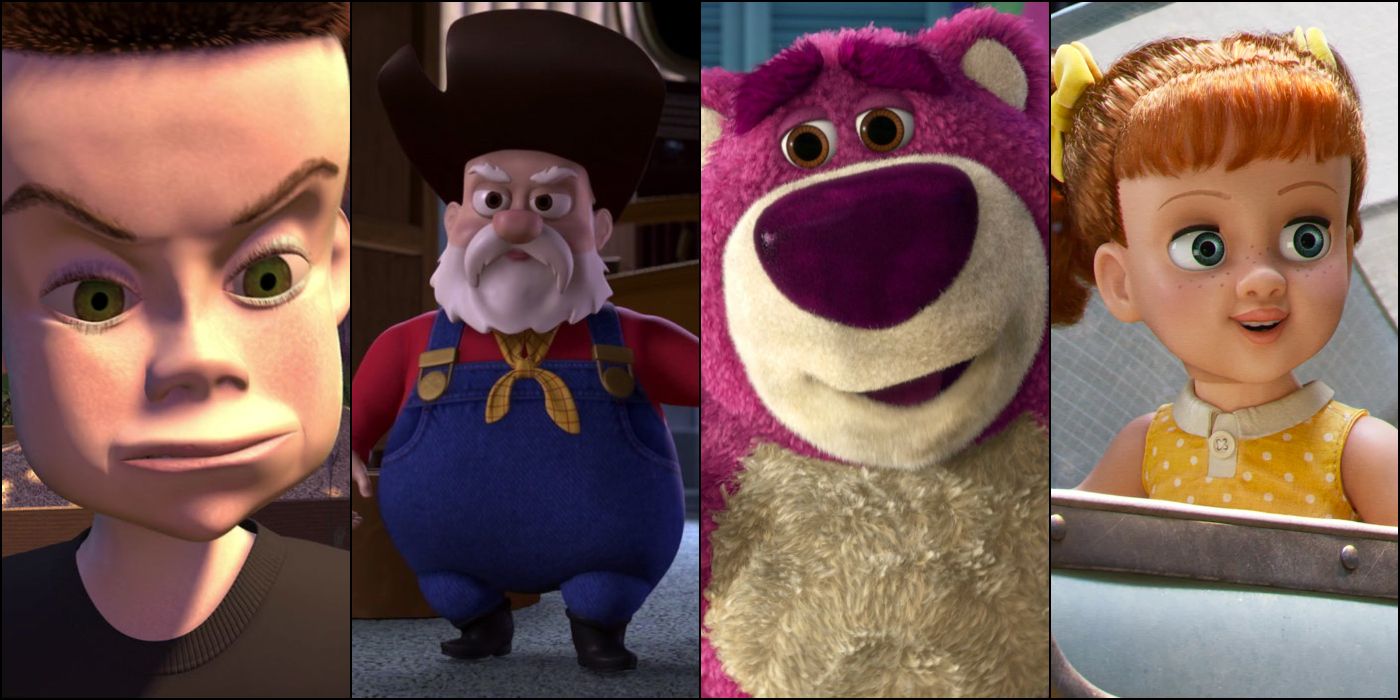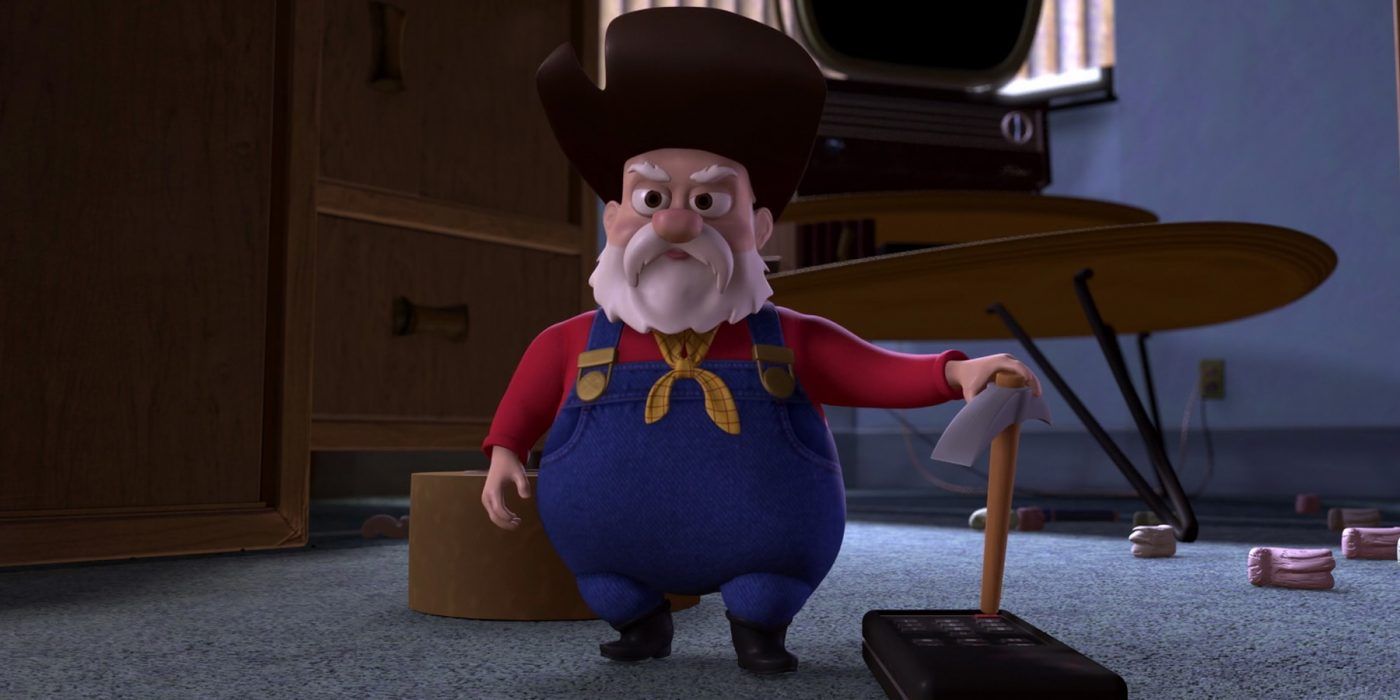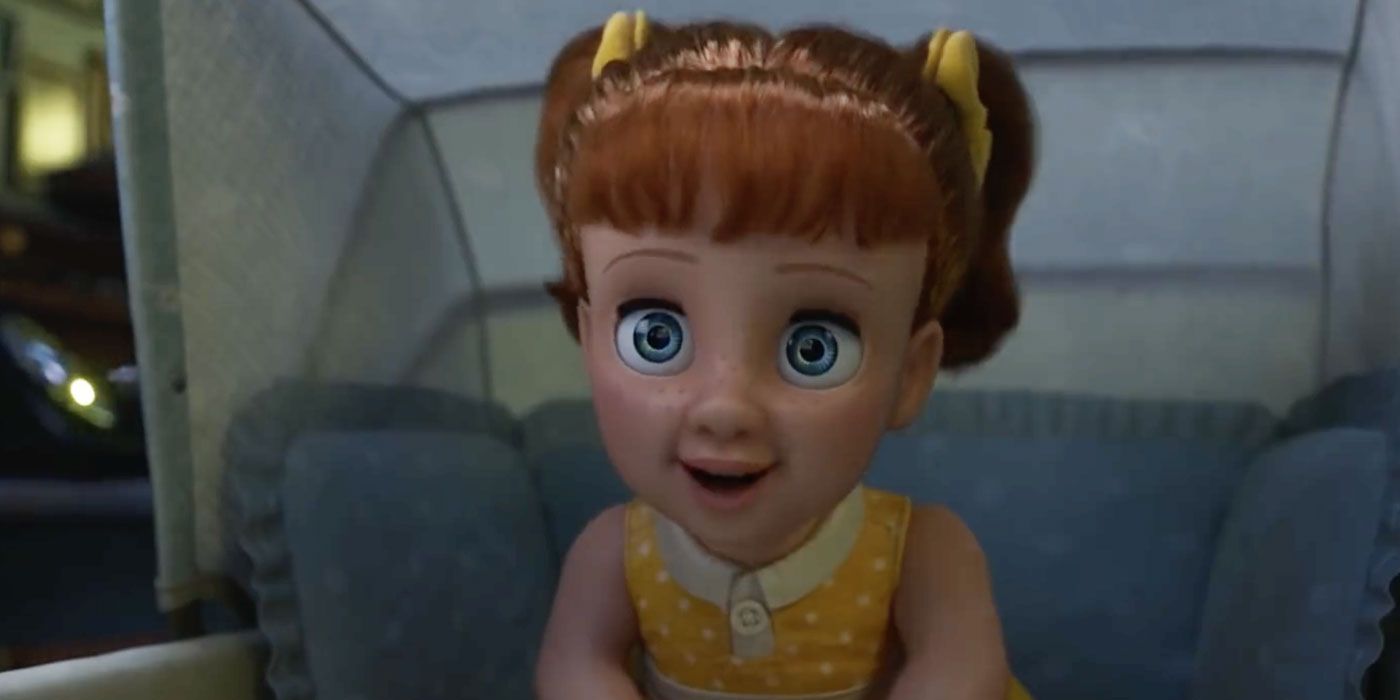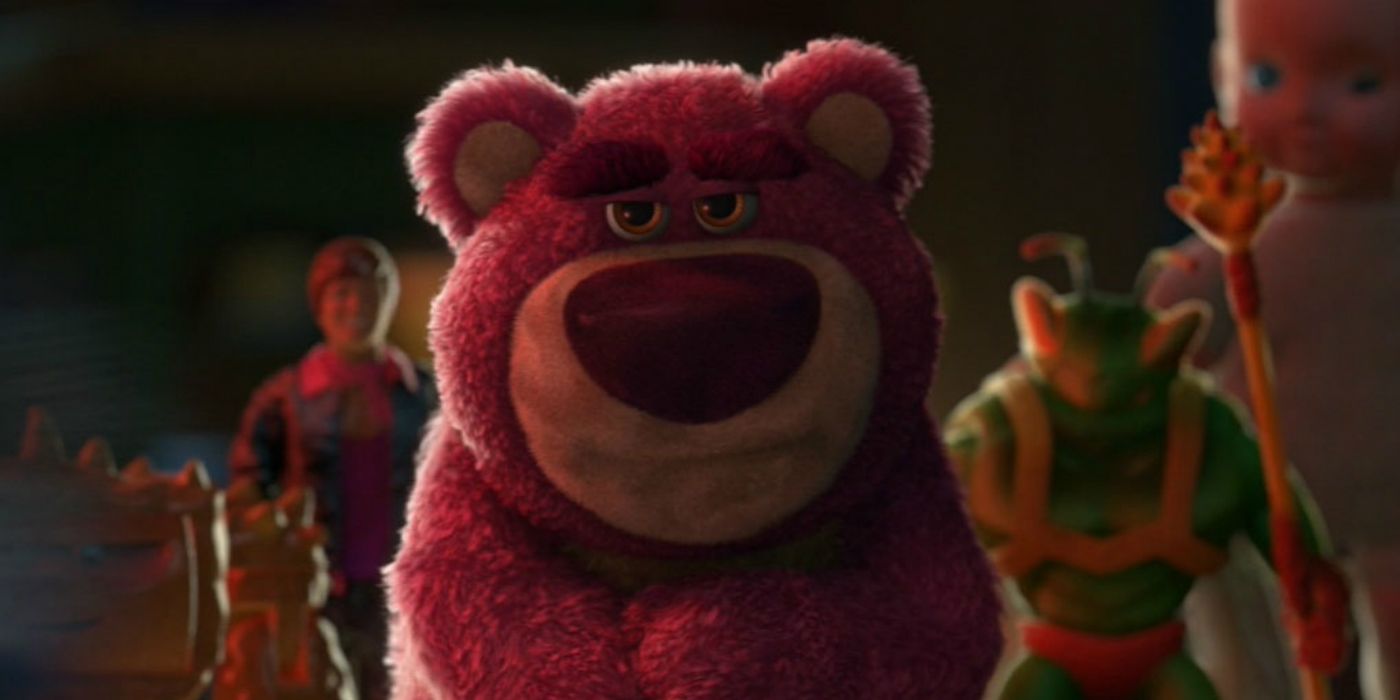The Toy Story franchise has featured some of animation’s most compelling villains, and they’ve all got some very good points to make. Over the course of four films, the Toy Story series has helped redefine animated movies in Hollywood. On a purely business level, they've broken multiple box office records, with worldwide grosses totaling $2.2 billion (so far) and every movie having a Rotten Tomatoes score of 98% or higher. The franchise has received 10 Academy Award nominations and won three, and some critics have even argued that the first three films are the greatest movie trilogy of all time.
There’s a reason we’re all seemingly so enamored with Toy Story, and that hasn’t changed with the release of the fourth installment. The franchise has remained consistently excellent, stylistically sophisticated, technologically ground-breaking, and emotionally resonant in a way that forced the rest of Hollywood (and Disney itself) to up their game. In Toy Story 4, the gang, now under the care of their new kid Bonnie, deals with new dangers and adventures that further remind them of their own mortality. Their newest addition, a craft project come to life called Forky, is struggling to understand his own existence, while Woody’s reunion with the long lost Bo Peep sees him contemplating a future for himself independent of being owned by a child.
However, the smartest and most deftly handled element of Toy Story 4 comes with its proto-villain, the vintage doll Gabby Gabby, who's voiced by Mad Men star Christina Hendricks. Flanked by a troupe of highly unnerving ventriloquist dummies, Gabby rules the roost at a local antiques store and is determined to fix her broken voice-box by any means necessary, which spells bad news for Woody. What makes Gabby’s arc so compelling is that she has a great point, one that is sympathetic and adds emotional shades to the film’s wider thematic concerns. Indeed, she is simply following in a great tradition for the Toy Story franchise: Their villains are kind of right, and that’s the point.
All Toy Story Villains Have Understandable Motives
The Walt Disney Company's iconic animated features have long been defined by a series of instantly recognizable traits: happily-ever-afters; a love of princesses; singing animals, and morally simple divides between good and evil. The Disney Villain is almost as, if not more, beloved than their heroes, and their motivations from the pre-Pixar era are typically easy to understand and categorize as evil: Maleficent curses a child with death out of spite for not being invited to a party; Lady Tremaine is exceptionally cruel to her step-daughter Cinderella out of jealousy; the evil Queen seeks to destroy Snow White so that her own vanity can go unchecked; Governor Ratcliffe from Pocahontas is a simplified stand-in for centuries of racism, colonialism, and greed. The Toy Story movies aren't the first films in which Disney decided to inject some empathy into their adversaries, but their consistency within this series did help shape the studio’s future.
Sid from 1995’s Toy Story is the least sympathetic one of the bunch, a bratty kid with a love of destruction who enjoys nothing more than melting, modifying, and exploding whatever toys he can get his hands on. In a world where toys are secretly sentient and can feel pain, his hobby is utterly psychotic, but given that nobody knows this, it’s not too weird to see a child doing that. Then, in Toy Story 2, Stinky Pete is a relic from another era, the kind of toy who wasn't all that popular even when cowboys and Westerns were all the rage. He's a perpetual sidekick who has spent most of his existence sitting on a shelf watching every other toy be sold before him, so of course he is excited about the prospect of being enshrined in history in a museum setting. The toy thief and collector Al is an extension of that mindset, too, treating toys as objects of historical importance. He’s greedy and a clear mockery of a specific type of geekery, but given how much money Pixar have made from toy collectors over the decades, it’s a trope that hits close to home for the studio.
With Toy Story 3, the dominant theme of the narrative was abandonment and loss of purpose. As Woody, Buzz, and the gang lost Andy to the passage of time, they saw a new life at Sunnyside Daycare as the next chapter of their lives. For Lotso (Ned Beatty), Sunnyside was his salvation, a chance to be loved once more after being accidentally left behind by his old owner and replaced by an identical toy. Understandably, the experience left him embittered and zealously committed to a new hierarchy of ownership and play. It’s Lotso who Toy Story 4’s Gabby bears the strongest resemblance to. While she was never abandoned, she suffers from a similar level of emotional struggle that accompanies the inevitably short shelf life of being a doll. But unlike Lotso, Gabby has never experienced the fleeting joy of being played with by a child, thanks to her defective voice-box. She wants the chance that Woody was given for many years, and it’s a struggle Woody himself is ultimately sympathetic towards. He, out of all the toys in the series, understands the most how much it pains a toy to be left without purpose.
Each Toy Story Villain Is Understandable But Corrupted
The Toy Story franchise holds a special meaning for the core audience who grew up with it, ageing as Andy did. The first film deals with the childlike fear of being replaced by a younger sibling, as paralleled by Woody and Buzz Lightyear's battle to be Andy's favorite. Toy Story 2 echoes the pre-adolescent struggle with no longer being a kid and looking for your purpose in the world. Toy Story 3 is achingly accurate in how it mirrors the emotional turmoil of letting go of childish things to become a proper adult. As verbalized by the hilarious Forky, Toy Story 4 speaks volumes to the ways we stumble when our supposed purpose in life doesn’t come true, and all the promises made to us as kids don’t pay off, but allow us to realize that it’s possible for us to carve out new paths for out futures. The toys’ struggle is the most relatable one across this vast arc but there’s a reason the villains’ ones remain so understandable, even as they become corrupted. Their flaws are ones rooted in the things that make them so familiar to audiences.
Sid is a destructive kid like many a young boy but his unchecked chaos and bullying is what turns his petulance into something less creative and more cruel. Stinky Pete tries to deny Woody, Jessie, and Bullseye the chance to make their own choices in favor of forcing them to help fulfill his dream, while Al has no qualms about stealing children's toys from a yard sale. Lotso wants order but at the cost of democracy, making him the closest thing the franchise has to a cuddly dictator. Gabby ultimately doesn’t end up being the baddie, because Woody, ever the selfless leader, gives her what she desires and tirelessly works to give her the happy ending she deserves. She isn’t so much corrupted as she is another example of the franchise’s sophisticated emotional understanding: Nobody is beyond saving.
Toy Story Villains Mirror Woody & The Bigger Themes
At the heart of Toy Story is the narrative of Woody. He’s the character who dominates the overriding plot and thematic progression arguably more than any other character, to the point where Toy Story 4 is almost exclusively about him to the detriment of fan favorites like Woody and Jessie. Woody's relationship with Andy is the backbone of the original trilogy, with the fourth movie acting almost as a solo movie for Woody to try and figure out his own story independent of the kid who defined him for so long. That’s one of the reasons the various villains of the franchise prove so alluring and often deeply understandable in their actions: Frequently, they’re the alternate version of Woody had he not been so selflessly adoring of Andy.
Sid is the kid who probably needed a guiding moral center or parental figure in the way Woody often serves Andy. Stinky Pete is the toy who was denied the attention Woody received from his kid. Lotso was cast aside much like Andy but chose to let his anger fester and turn to a lust for power rather than something that would benefit his fellow toy community. It all comes to a tipping point with Gabby, whose plight Woody cannot refute because it only further exposes his selfishness at trying to hold onto the good old days he shared with Andy. He has served his purpose as a toy and cannot deny Gabby that joy, even if it means losing his voice, one of the things that made him so unique and appealing to Andy. Despite his strong moral code and true drive to do the right thing, Woody can be reckless and hurt others in his pursuit of what he sees to be the best decision for everyone but is ultimately an extension of his own ego, something he is called out for in the fourth film. That’s another reason the franchise’s villains are so effective: They mirror Woody not just in approach but ideology.
Ultimately, Toy Story is a tale of growing up, both its joys and its perils. There are certain things you will never be able to avoid as you go from child to adult – childish destruction, fear of abandonment, resentment over your place in the world, fear of your loss of purpose, and eventually finding your path to contentment – and that’s something Pixar have keenly understood from the very beginning. Their most compelling stories come from that balance of ideas and morality and the Toy Story quadrilogy will forever stand as their masterpiece because of that. The best villains are so because all too often they make more sense than we’re willing to admit.




